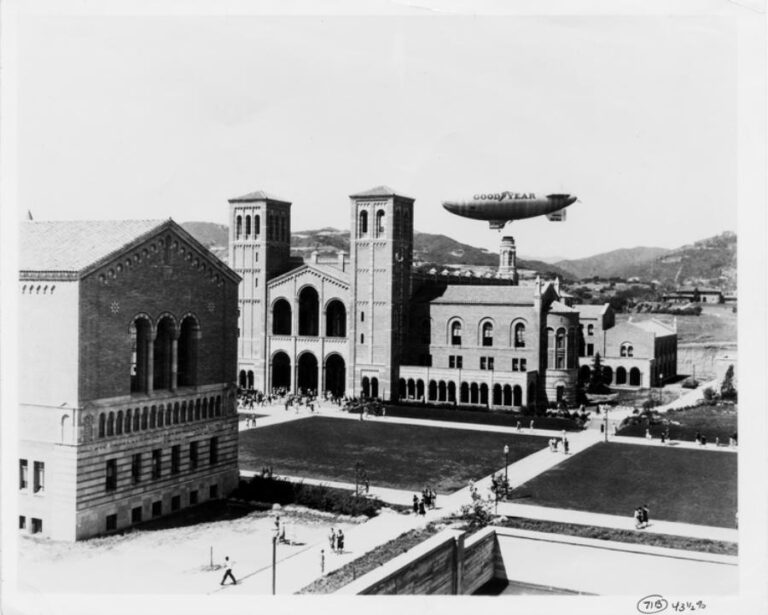The Daily Californian: UC Struggles to Fill Multi-Billion Dollar Pension Deficit

I couldn’t find any write-ups on the Post-Employment Benefits Task Force report in the press so far, including in the Daily Bruin. However, UC-Berkeley student paper does have a write-up with the graph above as part of the article. Note that the article correctly identifies the long contribution holiday as the major source of the underfunding problem. For the text, see below:
The Daily Californian
UC Struggles to Fill Multi-Billion Dollar Pension Deficit
By Jordan Bach-Lombardo and Javier Panzar
Monday, August 30, 2010
http://www.dailycal.org/article/110146/uc_struggles_to_fill_multi-billion_dollar_pension_
A decision made nearly 20 years ago to stop paying into the University of California’s pension program is coming back to haunt the university in the form of a potential $20 billion deficit, pitting UC officials and faculty against each other as they struggle to create a new pension model.
The decision, made in 1990 during a period of similar state budget woes, combined with the current sinking economy has eroded the pension program’s value to the point that, without immediate change to the fund’s management, the university will owe billions in benefits that it cannot afford to pay.
Though contributions to the fund resumed in April, a report released Friday by a university task force recommends the UC increase contributions while decreasing benefits to prevent insolvency of the program – a proposal sharply criticized by university employees who contend it would render the system uncompetitive.
“(The 1990 decision) was a serious error, and we’re facing the cost of it now,” said Robert Anderson, a UC Berkeley professor and member of the Post-Employment Benefits Task Force. “Unfortunately … again the state budget is in very bad shape, and the decline in the stock market means instead of gradually increasing the funding, we have to do it in a big bang that is very painful to the university budget.”
The vast problem now facing the UC began in 1990 with the decision by the UC Board of Regents to stop paying into the system altogether. With California struggling to bridge billion-dollar deficits during that recession, both UC and state leaders decided to save money by ceasing payments, instead banking on the assumption that the program – which had been so well managed in previous decades that it was significantly overfunded – would continue to pay for the thousands of pensions.
“It really is an amazing thing that this plan has gone along for 19 years without any contributions from anybody,” said Dan Simmons, the incoming chair of the Academic Senate who also served on the task force’s steering committee. “The problem with it is that the university … kind of became addicted to paying people without having to put any money on the table.”
Instead of paying into the fund for the last 20 years, the university channelled much of the money into its operational budget, growing in both size and scope, according to the report. During this time, the university expanded enrollment, founded its first new campus in decades and formed many new academic programs.
Even without any contributions, the fund was still about 50 percent overfunded in 2001, with roughly $30 billion in assets and $20 billion in liabilities, according to the report. But since then, the fund’s liabilities have increased as the number of retirees has grown, and with the economic collapse of 2008 compounding the negative trend, the pension’s liabilities outweighed its assets for the first time in 2009.
As of July 1, 2009, the pension plan was 95 percent funded.*
Following a $16 billion loss in assets in 2008 and 2009, UC President Mark Yudof assembled the task force last year to analyze the current pension system and propose new models that could not only sustain the university, but also compensate for almost 20 years of nonpayment.
Despite the general acknowledgment that contributions to the fund must increase to stave off insolvency, disagreements arose between members of the task force over how to balance future levels of contribution while still maintaining the university’s competitiveness in today’s job market.
Every faculty and staff member of the working groups signed a dissenting statement attached to the report, criticizing the steering committee’s approach to reducing costs as ultimately detrimental to the university.
“(The report) failed in letting the desire to cut costs dominate the far more important objective, providing benefits that are competitive and designed to support the preservation of the university’s excellence,” read the closing lines of the statement. “Because of that failure, we cannot support the recommendations of the executive summary or the full report of the steering committee.”
Anderson, a member of the task force’s finance working group and professor of economics and mathematics, expressed concern that the lower total remuneration rates, the value of the pension’s benefits, would erode the UC’s quality by losing current faculty and the ability to recruit top talent.
The crux of the disagreement lies within the report’s recommendations for future total remuneration. The dissenting statement calls the options proposed by the report “marginally competitive” only if employee salaries are increased to market levels.
UC Provost Lawrence Pitts, the chair of the steering committee, said that although total remuneration might be less under the new plan, it will cost both the university and its employees less money.
But while contention exists over the amount of employer, employee and state contributions to the pension fund, all sides agree that payments must increase as soon as possible.
“(The university) is clearly going towards a negative funding status,” Pitts said. “We are now below 100 percent with a rapid downhill trajectory.”
In a letter addressed to the UC community, Yudof welcomed input from “both within and outside the university about the best ways to restructure and fund our retirement programs.”
The recommendations from the task force will be reviewed by the UC Office of the President over the coming months and sent to the regents, who will hold a single-issue meeting in December to vote on the issue, Pitts said.
—————————————-
*EDITOR’S NOTE: The 95% figure is on a moving average basis used for smoothing. On a current market basis, the underfunding is much larger.
UPDATE: The Chronicle of Higher Ed has a story on pension problems at public universities which – not surprisingly – makes substantial reference to UC. Article is at:
http://chronicle.com/article/As-Pension-Costs-Rise-Public/124150/
UPDATE: The LA Times carries a brief story on the PEB report at http://www.latimes.com/news/local/la-me-uc-pension-20100831,0,5013982.story
UPDATE: Editorial on the PEB report in the San Diego Union-Tribune at http://www.signonsandiego.com/news/2010/sep/04/still-more-grim-news-on-pension-front/

